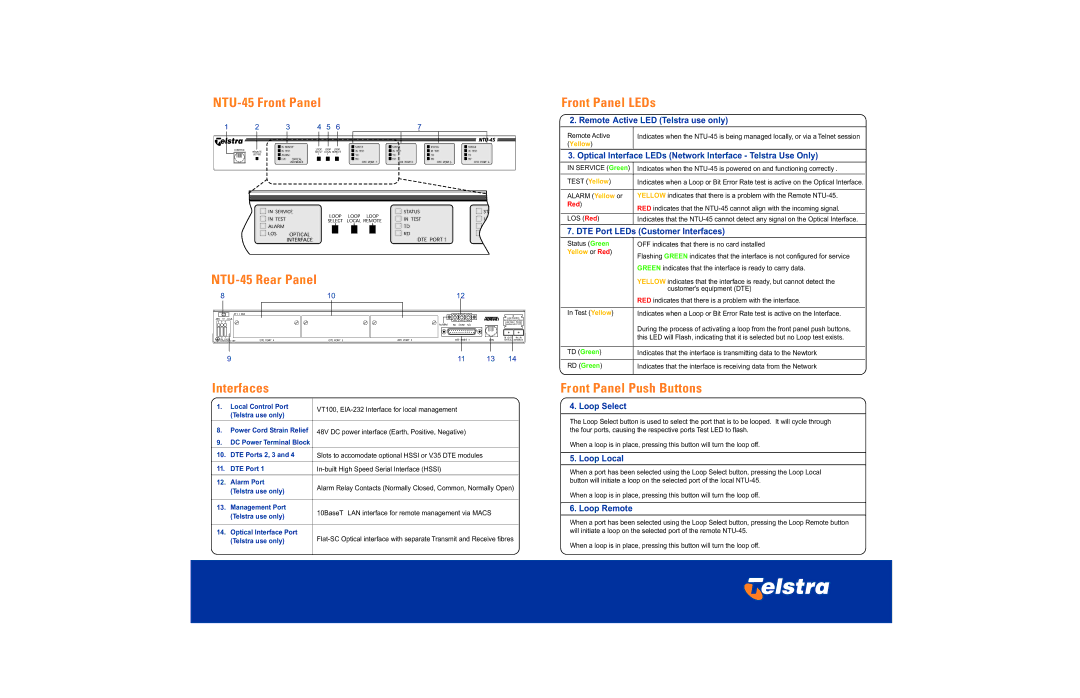NTU-45 specifications
The Telstrat NTU-45 is a robust telecommunications network unit that is designed to facilitate efficient data transmission in various applications, including telecommunication networks and service provider infrastructures. As spectral demand increases, the NTU-45 stands out as a reliable and efficient solution for delivering high-capacity services.One of the main features of the NTU-45 is its ability to support multiple protocols for diverse service requirements. This versatility ensures compatibility with various network architectures and enhances its interoperability with existing systems. The unit supports both TDM (Time Division Multiplexing) and packet-switched technologies, making it a suitable choice for service providers looking to maintain legacy systems while transitioning to modern broadband services.
The design of the NTU-45 emphasizes high performance. It is equipped with a powerful processor that enables rapid packet processing and low latency communications, ensuring that voice, video, and data services are delivered efficiently. In an age where real-time communication is critical, the NTU-45 provides a seamless user experience, which is essential for businesses that rely on constant connectivity.
Another significant characteristic of the NTU-45 is its scalability. As businesses grow and demand for bandwidth increases, the NTU-45 can adapt by upgrading configurations without the need for complete infrastructure overhauls. This scalability feature not only improves cost efficiency but also minimizes downtime during upgrades, which is a crucial factor for many organizations.
In terms of reliability, the NTU-45 is designed with industry-grade components that ensure long-term durability and reduced operational failures. Moreover, it incorporates advanced monitoring tools that provide real-time analytics and system alerts, enabling quick response to potential issues before they can impact service delivery.
Security is also a top priority for the NTU-45. It offers a range of security features, including encryption and user authentication, which protect sensitive data during transmission. This focus on security is essential for service providers aiming to comply with regulatory requirements and maintaining customer trust.
In conclusion, the Telstrat NTU-45 represents a combination of advanced technologies and practical features that enable effective communication solutions. Its adaptability, performance, reliability, and security make it a crucial asset for any organization looking to enhance its communication infrastructure.

